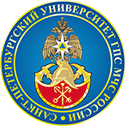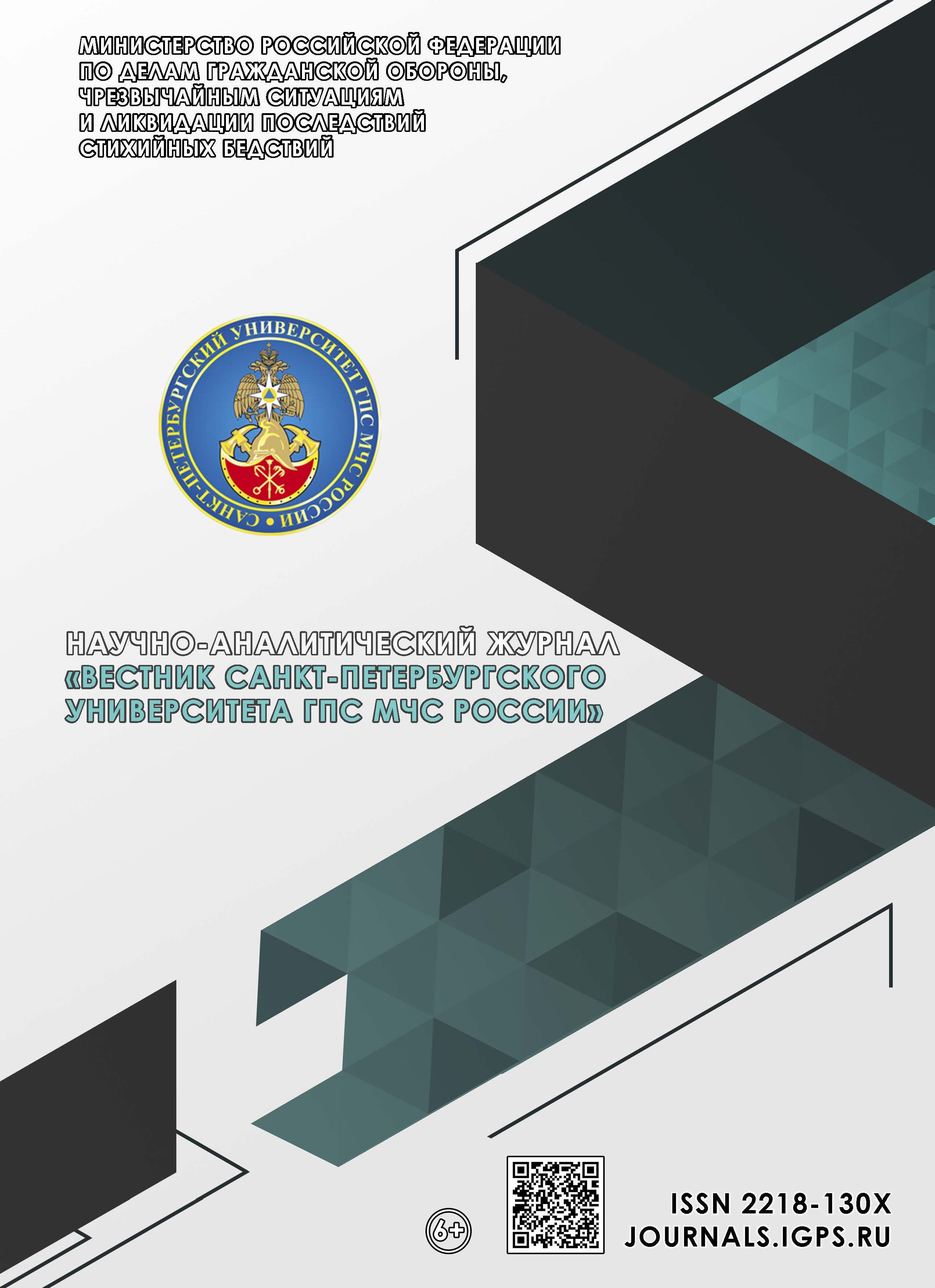Russian Federation
Russian Federation
Fire, functional and information security at hazardous industrial facilities are the most important aspects to ensure the sustainability of the production process. In high-risk industries, standards for fire, functional and information security of systems and processes are applied as independent. The expansion of the intellectualization of production, as well as the continuous digital transformation of business processes, determine the relevance of the interconnectedness of fire, functional and information security of complex systems. The connection between fire, functional and information security is so close that it is quite difficult to segment them. New contradictions and conflicts can also arise when problems and various aspects of security are considered independently of each other. Therefore, the question of how to integrate and differentiate fire, functional and information security is problematic and quite relevant, which needs to be addressed. Currently, there are a number of studies and campaigns on the integration of fire, functional and information security. The concept of a comprehensive risk assessment and an integrated model of the life cycle of functional and information security systems are considered. The description and the proposed basis for achieving integration of various security areas are given. It is proposed to consider the complex application of fire, functional and information security of hazardous production facilities in relation to the practice of state fire supervision activities.
fire safety, functional safety, information security, hazardous production facilities, state fire supervision, mathematical model of integrated safety
1. Livshic I.I., Suncova D.I. Chislennyj raschet funkcional'noj bezopasnosti komponent tekhnicheski slozhnyh promyshlennyh ob"ektov // Avtomatizaciya promyshlennosti. 2023. № 8. S. 9–15.
2. Indyk Yu.D., Mozhaeva I.A., Strukov A.V. Vybor i obosnovanie komponentov PAZ s uchetom trebovanij polnoty bezopasnosti podtverzhdenie sootvetstviya // Aktual'nye problemy zashchity i bezopasnosti: trudy XXVI Vseros. nauch.-prakt. konf. SPb., 2023. S. 245–253.
3. Mozhaeva I.A., Strukov A.V. Osobennosti ocenki pokazatelej funkcional'noj bezopasnosti sistem protivoavarijnoj avtomaticheskoj zashchity s ispol'zovaniem derev'ev neispravnostej // Nadezhnost'. 2022. T. 22. № 4. S. 45–52.
4. Strukov A.V., Mozhaeva I.A. Priblizhennye i uproshchennye metody rascheta pokazatelej funkcional'noj bezopasnosti sistem protivoavarijnoj avtomaticheskoj zashchity // Aktual'nye problemy zashchity i bezopasnosti: trudy XXVII Vseros. nauch.-prakt. konf. SPb., 2024. S. 550–557.
5. Nozik A.A., Mozhaeva I.A., Strukov A.V. Metody resheniya pryamoj i obratnoj zadachi ocenki funkcional'noj bezopasnosti sistem protivoavarijnoj avtomaticheskoj zashchity // Aktual'nye problemy zashchity i bezopasnosti: trudy XXIII Vseros. nauch.-prakt. konf. Ros. akad. raketnyh i artillerijskih nauk (RARAN). M., 2020. S. 196–211.
6. Mozhaeva I.A., Nozik A.A., Strukov A.V. Tipovye primery rascheta funkcional'noj bezopasnosti sistem protivoavarijnoj zashchity opasnyh proizvodstvennyh ob"ektov // Aktual'nye problemy zashchity i bezopasnosti: trudy XXII Vseros. nauch.-prakt. konf. RARAN. 2019. S. 486–494.
7. Bochkov K.A., Buj P.M., Komnatnyj D.V. Garmonizaciya trebovanij po informacionnoj bezopasnosti razlichnyh ob"ektov zashchity // Kompleksnaya zashchita informacii: materialy XXVI Nauch.-prakt. konf. / otv. za vyp. S.N. Kasanin. Gomel', 2021. S. 220–226.
8. Wenze X., Jianghong J. Summary of Integrated Application of Functional Safety and Information Security in Industry: 12th International Conference on Reliability, Maintainability, and Safety (ICRMS). 2018. P. 463–469. DOIhttps://doi.org/10.1109/ICRMS.2018.00092.
9. Sliwinski M., Piesik E., Piesik J. Integrated functional safety and cyber security analysis / IFAC PapersOnLine 51-24 (2018). P. 1263–1270.
10. Systems engineering approach to functional safety and cyber security of industrial critical installations. In Safety and Reliability of Systems and Processes; Eds. / K.T. Kosmowski [et al.]. Gdynia Maritime University: Gdynia, Poland, 2020. P. 135–151.
11. Integrated Functional Safety and Cybersecurity Evaluation in a Framework for Business Continuity Management / K.T. Kosmowski [et al.] // Energies 2022. 15. 3610. P. 1–21. DOI:https://doi.org/10.3390/en15103610.
12. Karmanov A.V., Orlova K.P. Metod opredeleniya pokazatelej bezopasnosti na kriticheski vazhnyh ob"ektah neftegazovoj otrasli // Gubkinskij universitet v reshenii voprosov neftegazovoj otrasli Rossii: tezisy dokladov VI Reg. Nauch.-tekhn. konf., posvyashch. 100-letiyu M.M. Ivanovoj. M., 2022. S. 775–776.
13. Karmanov A.V., Orlova K.P. Metod rascheta pokazatelej sistemy bezopasnosti v sostave ASUTP neftegazovoj otrasli // Gubkinskij universitet v ekosisteme sovremennogo obrazovaniya: tezisy dokladov V Reg. nauch.-tekhn. konf. / otv. red. V.G. Martynov. M., 2021. S. 44.
14. Perspektivy razvitiya distancionnogo kontrolya promyshlennoj bezopasnosti v chasti kontrolya tekhnologicheskih parametrov / D.V. Ibadulaev [i dr.] // Aktual'nye problemy zashchity i bezopasnosti: trudy XXVII Vseros. nauch.-prakt. konf. SPb., 2024. S. 483–495.
15. Ibadulaev D.V., Stepanov I.V., Turusov S.N. Tekhnologi sozdaniya algoritmicheskogo obespecheniya ob"ektovoj sistemy distancionnogo kontrolya promyshlennoj bezopasnosti // Aktual'nye problemy zashchity i bezopasnosti: trudy XXVII Vseros. nauch.-prakt. konf. SPb., 2024. S. 522–527.
16. Opyt vnedreniya sistemy distancionnogo kontrolya promyshlennoj bezopasnosti v chasti kontrolya tekhnologicheskih parametrov / D.V. Ibadulaev [i dr.] // Aktual'nye problemy zashchity i bezopasnosti: Trudy XXVI Vseros. nauch.-prakt. konf. SPb., 2023. S. 235–244.
17. Kirca Y.S., Değirmenci E., Demirci Z. and ets. Runtime Verification for Anomaly Detection of Robotic Systems Security // Machines. 2023. 11(2):166. DOI:https://doi.org/10.3390/machines11020166.
18. Matveev A.V. Organizacionnye i metodicheskie aspekty obespecheniya bezopasnosti potencial'no opasnyh ob"ektov. SPb.: S.-Peterb. un-t GPS MCHS Rossii, 2019. 144 s. ISBN 978-5-4268-0051-9. EDN JGVNSE.







